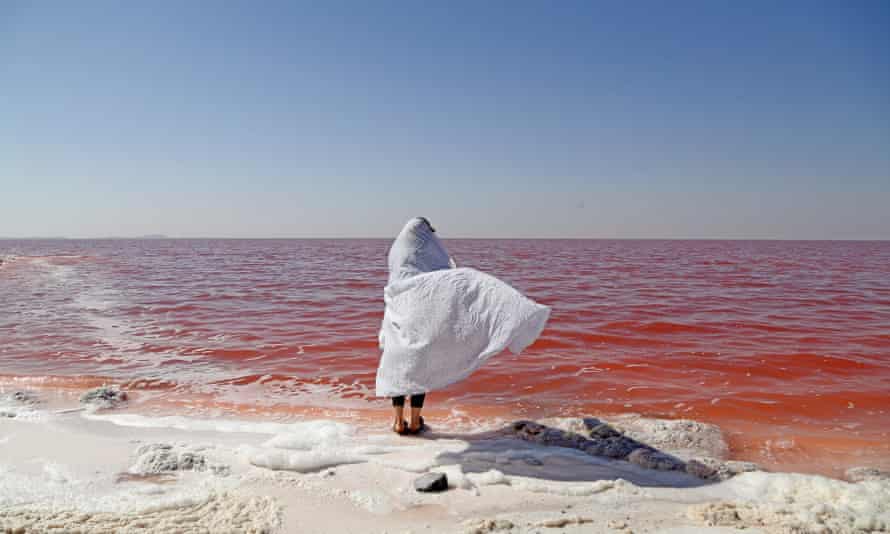Iran’s decision-makers must shoulder the blame for its water crisis
Invoking climate change as the sole cause of terrible shortages lets those in authority off the hook
- Kaveh Madani is a former deputy vice-president of Iran

Iran’s water bankruptcy has been in the news lately, prompting deadly protests in Khuzestan province that also garnered the attention of global media. But this kind of problem is neither new or unique in the country. Drying rivers, vanishing lakes, shrinking wetlands, declining groundwater levels, land subsidence, sinkholes, desertification, soil erosion, dust storms, air, water and waste pollution, biodiversity loss, deforestation and wildfires are among the other familiar signs of Iran’s environmental devastation.
Khuzestan, in south-west Iran, is known globally for its rich oil and gas resources. But this wealthy province’s contribution to Iran’s development is not just its oil and gas revenue. Khuzestan is also water-rich compared with most of the country. So, its large rivers have been blocked by gigantic dams to store water for agriculture, industrial and domestic uses and hydroelectricity production. Considerable amounts of water have been also transferred from its rivers’ tributaries to dry regions in central Iran.
Excessive manipulation of the natural environment for economic purposes has pushed Khuzestan’s ecosystem to breaking point. The water-bankrupt province can no longer satisfy the needs of farmers, industries, cities and villages, and fragile wetlands ecosystems that, once dried up, turn into dust sources and punish the innocent Khuzestanis with paralysing dust storms.
What Khuzestan and the rest of Iran is experiencing today is not unexpected. Once you drain your checking account (surface water) and exhaust your savings account (groundwater), you are left with a lot of creditors (water rights-holders) whose demands cannot be satisfied. You are then water bankrupt and the dissatisfaction of the claimants can trigger major conflicts.
The amount of water Iran uses has been more than its amount of renewable freshwater in most parts of the country for many years. Lots of experts, including me, have been warning about the national security risks of this situation for years. As a researcher, this is one of the rare moments that I wish all my projections about my home country were wrong.
This year’s major drought has come after two excessively wet years that filled up the reservoirs and gave life to the wetlands. But mismanagement of the water that was gained and a lack of preparedness for subsequent dry conditions caused drinking water and power outages, disruption to agricultural water allocations, and vanishing wetlands – all of which affected livelihoods and triggered anger.
The Khuzestan protests also have an important social justice element. Ethnic Arab populations are expressing their serious frustration with what they consider a “systematic” or “intentional” discrimination that has resulted in underdevelopment in their rich province. Khuzestanis are also questioning why “their” water must be transferred to other regions while they are suffering from thirst.
Obviously these problems were not created overnight, but through decades of unsustainable development, rooted in poor planning, lack of foresight and ineffective environmental governance. A chronic problem of this scale doesn’t have a quick fix. So, as in the past, the government will mainly focus on anger management, sticking-plaster solutions – such as compensating the farmers for income losses and ensuring more regular deliveries of drinking water – as well as making promises, while hoping that the problems disappear soon with some rainfall.
Many have asked what the role of climate change is in this situation. Climate change is real and immediate action is essential. I have fought a costly fight for this belief as a researcher in the global north and a former decision maker in the global south. I am not a climate change denier, but I am extremely concerned about the unintended consequences of constantly emphasising the role of climate change in extreme events.
Climate change is making Iran warmer and drier. It also increases the frequency and intensity of extreme events such as droughts. So it could have played a role as a catalyst, but certainly must not be sold as one of the main causes of the problem.
We in the climate change community tend to climatise extreme events with a natural dimension such as the wildfires in the US and Canada, the floods in Europe and China, or the drought in Khuzestan. We do this in the services of a good cause: getting the attention of the decision-makers over an existential problem. But this can be misleading and counterproductive.
The fact is that Iran would have experienced today’s problems at some point as the result of local anthropogenic changes regardless of global climate change. Climatising extremes can be a gift to most decision-makers who don’t want to accept liability for their bad decisions. They will tell you that there is not much they can do. If they’re from the developing economies, they will also remind you that they are the victims of a global catastrophe created by the advanced industrial nations.
Even if climate change stopped and Iran cut its carbon emissions by 100% right now, its water bankruptcy and many other environmental problems would not be solved immediately. This does not mean that we should give up the climate fight. But alongside that global struggle, we must remember that local decision-makers are liable for avoidable failures of environmental management that result in the degradation and suffering we are now seeing in Iran.
-
Kaveh Madani is a former deputy vice-president of Iran and a Henry Hart Rice senior fellow at Yale University